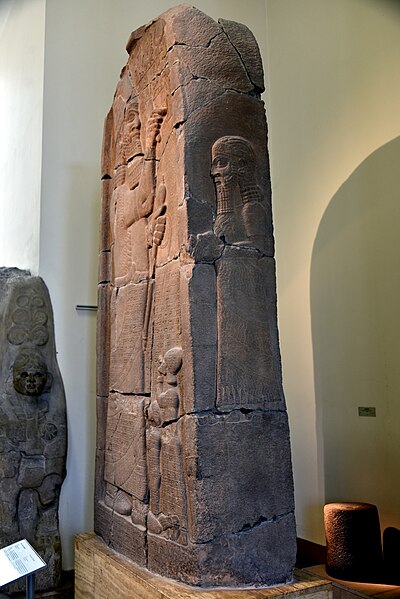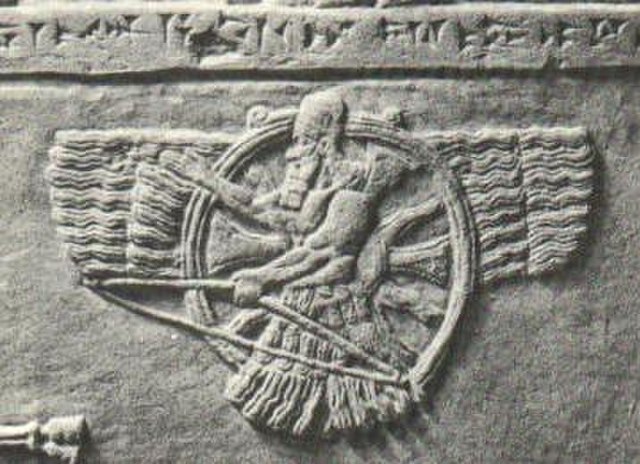Ashurbanipal was the king of the Neo-Assyrian Empire from 669 BC to his death in 631. He is generally remembered as the last great king of Assyria. Ashurbanipal inherited the throne as the favored heir of his father Esarhaddon; his 38-year reign was among the longest of any Assyrian king. Though sometimes regarded as the apogee of ancient Assyria, his reign also marked the last time Assyrian armies waged war throughout the ancient Near East and the beginning of the end of Assyrian dominion over the region.
Ashurbanipal, closeup from the Lion Hunt of Ashurbanipal
The victory stele of Esarhaddon, Ashurbanipal's father. The front side depicts Esarhaddon and the sides depict the two crown princes Ashurbanipal (on the side shown here) and Shamash-shum-ukin (on the opposite side) Pergamon Museum
A copy of the Zakutu Treaty, drawn up by Ashurbanipal's grandmother Naqi'a in 669 BC, imploring the populace of Assyria to swear loyalty to Ashurbanipal
Relief depicting Ashurbanipal's army attacking an Egyptian fortified city, possibly Memphis, during the Assyrian conquest of Egypt.
Ashur, Ashshur, also spelled Ašur, Aššur was the national god of the Assyrians in ancient times until their gradual conversion to Christianity between the 1st and 5th centuries AD.
A Neo-Assyrian sun disk traditionally viewed to symbolize Ashur





